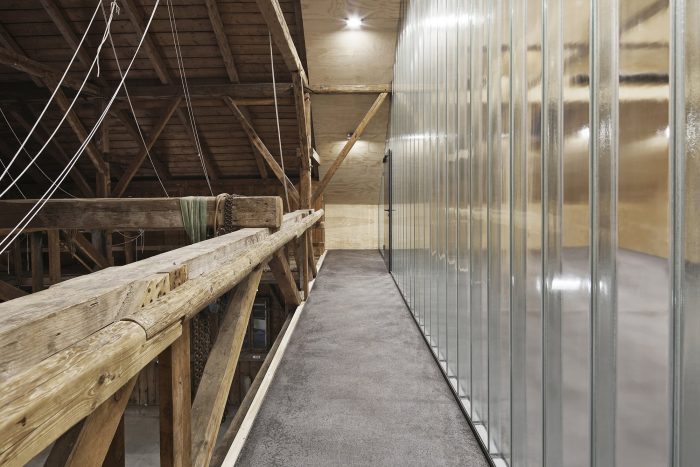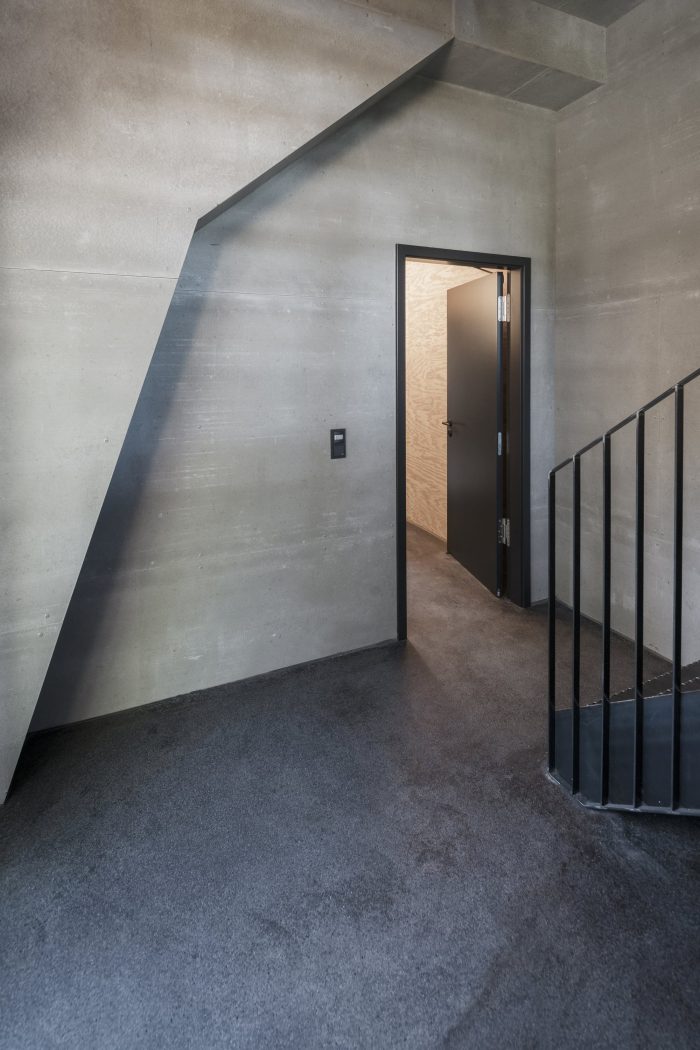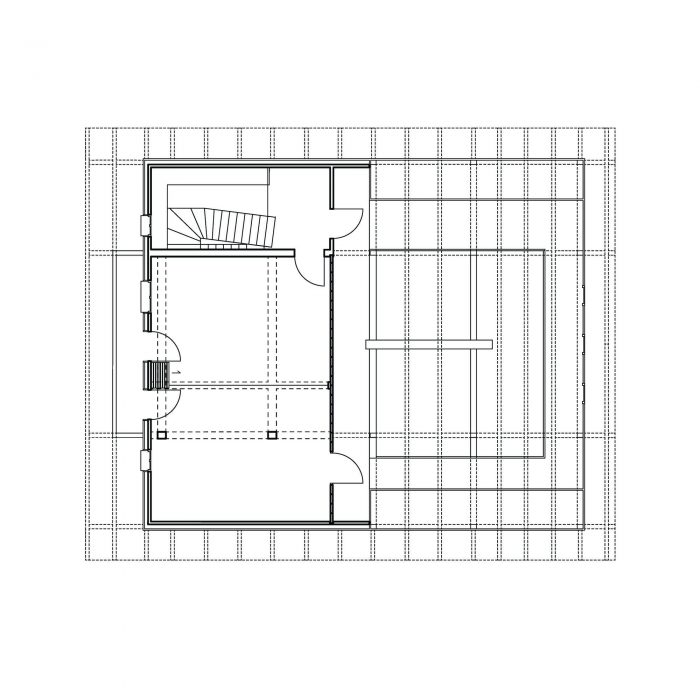奥格斯堡帆船俱乐部有着悠久的传统。自1903年以来,人们就在乌廷的安默湖(Ammer)上航行。船库建于1905年,现在是俱乐部的心脏。有人表示希望能提供一些房间来训练下一代的ASC水手。为此,我们决定不建造新的建筑,而是将所需的场所整合到现有的历史悠久的木制船库中,同时不影响后者的原有内容。
Augsburg Sailing Club has a long-standing tradition. People have sailed on Lake Ammer, the Ammersee, at Utting since 1903. Built in 1905, the boathouse is now the beating heart of the club. A wish was expressed to provide rooms in which to train the upcoming generation of ASC sailors. It was decided not to erect a new building for this purpose, but to integrate the requisite premises into the existing historical wooden boathouse –without interfering with the latter’s original substance.
相反,所有现有的改造工程被拆除,使建筑的原始结构暴露无遗。然后,一个屋中屋的概念得以实现。虽然大部分可用空间仍被用作船库和存储空间,但屋顶朝向湖泊的一侧被改造成一个独立的房间。由此产生的区域被一堵由异形玻璃制成的从地板到天花板的墙与主厅分开。在这一侧,通过历史性的外墙可以看到安默湖。因此,年轻的水手们在一个合适的环境中接受训练,在现在可见的储帆区和湖面之间。如果有必要,训练室可以通过一个木制的手风琴隔断来划分。在这个房间的下面,一个 “黑盒子 “被安置在大厅的边缘。这里面不仅有入口区,还有一个通往上层的钢制楼梯和新的厕所设施。
On the contrary, all existing conversion work was dismantled, laying bare the building’s original structure. A house-in-house concept was then realized. Whereas the majority of the available space is still used as a boathouse and as storage space, the side of the roof facing the lake was converted into a room in its own right. The resulting area was separated from the main hall by a floor-to-ceiling wall made of profiled glass. On this side, Lake Ammer is visible through the historical façade. The young sailors are thus trained in a fitting setting, between the now visible sail storage section and the lake. If necessary, the training room can be divided up by means of a wooden accordion partition. Underneath this room, a “black box” was positioned at the edge of the hall. This contains not only the entrance area but also a steel staircase leading to the upper level and the new toilet facilities.
因此,在不触及现有结构的情况下,创造了一个额外的使用空间,这与可持续地改造建筑以适应未来需求的计划是一致的。在执行这些计划的过程中,使用了可持续和可再生的原材料,材料没有经过化学处理。在与现有建筑的对话中,为了明确区分改建,所有的包层和表面都采用了阿勒颇松木。这给了房间一种宁静的感觉,并与历史上的屋顶桁架形成对比。改建工作只能从外面猜测。在内部,一个刺激性的组合被创造出来,而大厅作为一个整体的印象仍然是可以感知的。
A space has thus been created without touching the existing structure for additional use, one that is line with the plans to sustainably adapt the building to future requirements. Sustainable and renewable raw materials were used in the execution of these plans and the materials were not chemically treated. In dialog with the existing building and in order to clearly distinguish the alterations, all the cladding and surfaces were realized in Aleppo pine. This gave the room a peaceful feel and contrasted with the historical roof truss. The conversion work can only be guessed at from the outside. On the inside, a stimulating ensemble is created, while the impression of the hall as a whole remains perceptible.
Architects: Buero Wagner
Area : 120 m²
Year : 2018
Photographs :Florian Holzherr
Manufacturers : Lamberts
Other Participants : Edwin Hoffmann
Architect In Charge : Fabian A. Wagner
City : Utting am Ammersee
Country : Germany












